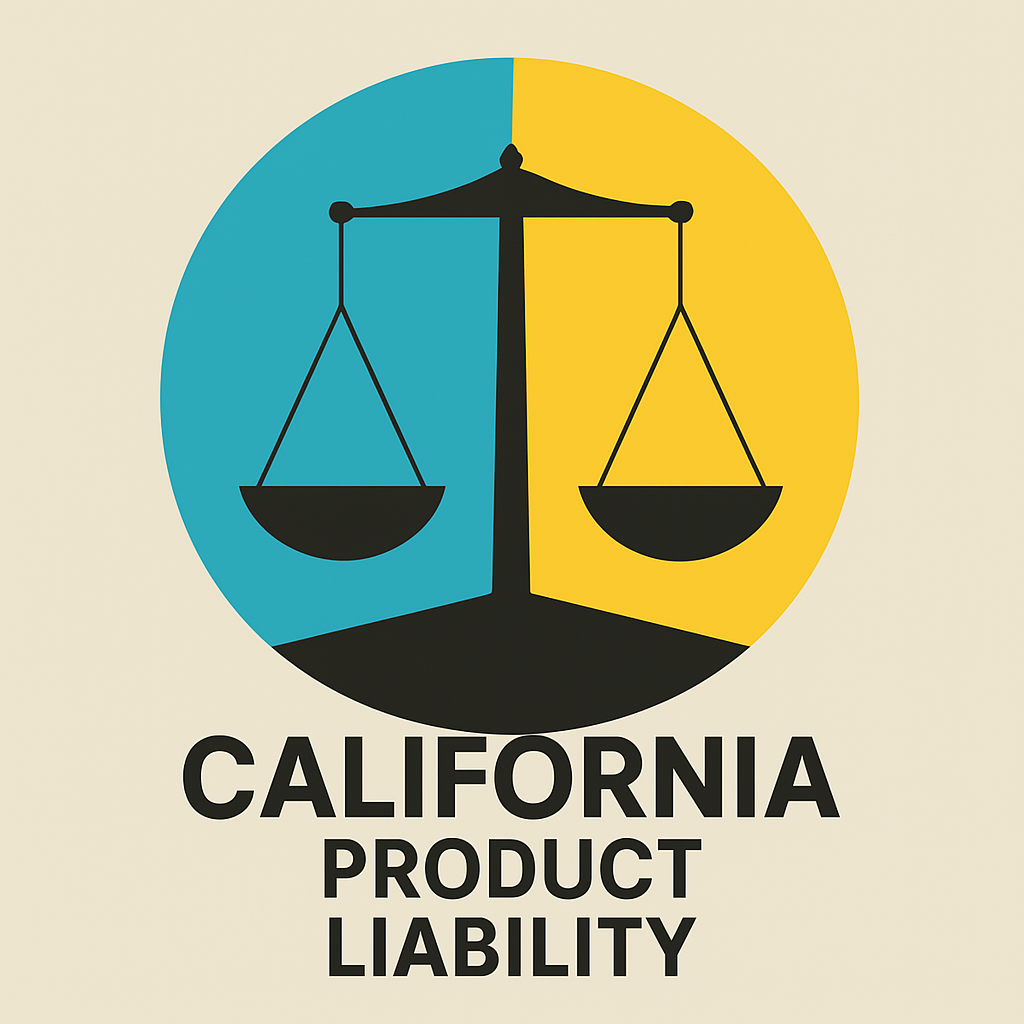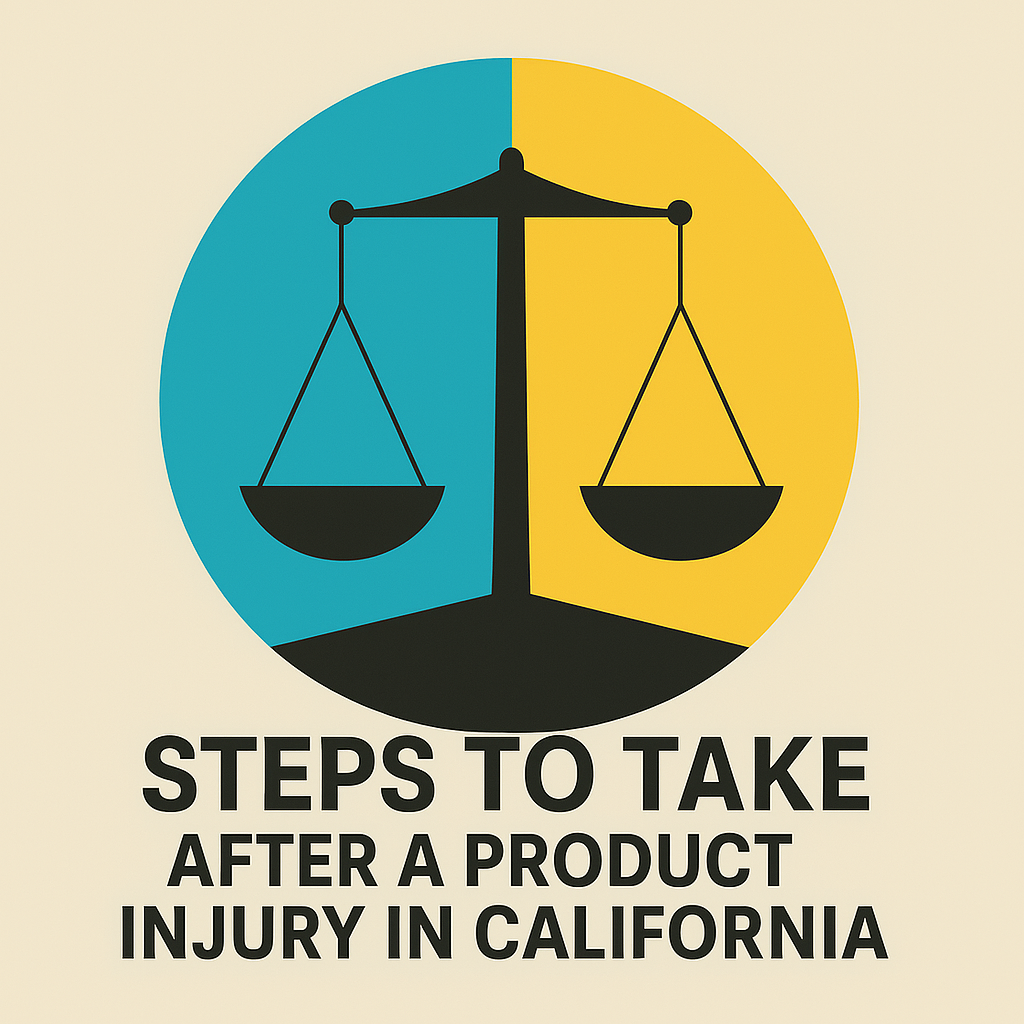When you buy a product, you expect it to be safe. But sometimes, items come with defects that can cause serious harm. In California, product liability laws let injured consumers seek compensation from manufacturers, sellers, or distributors who placed dangerous products on the market.
Below is an overview of how product liability works, the types of product defects that can lead to a lawsuit, and what you should do if a defective product injures you.

What Is a Product Liability Claim?
A product liability claim means you are holding a manufacturer, distributor, or seller responsible if a defective product caused your injury. In California, you usually don’t have to prove the company was careless (negligent). Instead, you focus on showing that the product was defective and that the defect harmed you.
This approach is called strict liability. The policy behind it is that companies, rather than consumers, should pay for damages if their products are unsafe.
- For background, see Nelson v. Superior Court, 144 Cal. App. 4th 689 and Camacho v. JLG Industries Inc., 93 Cal. App. 5th 809.
Key Elements of a Product Liability Claim in California
Under strict liability law, there are five main things to prove:
Product Placed on the Market
The company put the product into the stream of commerce, expecting people to use it without extra checks. See Nelson v. Superior Court, 144 Cal. App. 4th 689.
Defective Product
The product had a defect that made it unreasonably dangerous. California recognizes three types of defects:
- Manufacturing Defects: Errors during production (for example, a batch of bolts made too thin). See Williams v. J-M Manufacturing Co., 102 Cal. App. 5th 250.
- Design Defects: The product’s basic design is unsafe (for example, a car with a poorly placed gas tank). See Barker v. Lull Engineering Co., 20 Cal. 3d 413.
- Warning Defects (Failure to Warn): The product lacks important instructions or cautions (for example, a medication with hidden side effects). See Johnson v. American Standard, Inc., 43 Cal. 4th 56.
Causation
The defect was a big reason you got hurt. For example, if the product’s defect directly led to your injuries, it meets this requirement. See Thomas v. Lusk, 27 Cal. App. 4th 1709.
Injury or Damage
You must show you suffered harm (like medical bills, pain, or property damage). Without proof of real losses, you cannot collect money. See § 97.50 Strict Liability in Tort.
Link to the Product
You used (or were exposed to) the product in a reasonable or expected way when the injury happened.
When all these parts are present, you have a strong foundation for a product liability case in California.
Common Types of Product Defects in California Product Liability Cases
When a product is considered “defective,” it typically falls into one of three main categories: manufacturing defects, design defects, or warning defects (also called “failure to warn”). Understanding these differences can help you decide if you have a valid product liability claim and how best to pursue it.
1. Manufacturing Defects
These defects happen during assembly or production, causing certain items to become more dangerous than intended.
- Example: A batch of bicycle brakes missing a key bolt, making them fail suddenly.
2. Design Defects
A product’s overall design is flawed, so every item of that type is unsafe—even if made perfectly.
- Example: A laptop that overheats and catches fire because of the battery’s placement.
3. Warning Defects
Sometimes called “failure to warn” or “marketing defects.” These happen if the product’s maker did not tell consumers about hidden dangers.
- Example: A cleaning spray with chemicals that cause burns but no warning label to wear gloves.
Common Defenses Companies Use
When you file a product liability claim, manufacturers or sellers often argue:
Product Misuse
The user did something unexpected with the product.
- Counter: Show that your use was predictable or normal.
Product Alteration After Sale
Someone changed the product after it left the seller, so the defect was not the seller’s fault.
- Counter: Prove the flaw existed before you got it.
Assumption of Risk
The user ignored a clear warning or did something obviously dangerous.
- Counter: Show the product was still defective regardless of warnings.
Steps to Take After a Product Injury in California

Get Medical Help
Even if your injury seems small, a doctor’s exam can reveal hidden problems. Medical records also help show your injury is real.
Keep the Product and Packaging
Don’t throw it away or try to fix it. Original condition can be useful evidence.
Gather Proof of Damage
Photos of injuries, receipts for medical bills, and notes on pain levels can all help.
Find Witnesses
If anyone saw what happened or has had similar issues with the product, their testimony can support your claim.
Avoid Talking to Company Reps Alone
Manufacturers or insurers might try to settle quickly or blame you. Consider getting legal advice from a product liability attorney in California first.
Contact a California Product Liability Lawyer
A lawyer familiar with California product liability can guide you on the next steps and handle tough negotiations.
Why California Product Liability Claims Matter
- Promote Safety: Companies pay more attention to design and testing when they know they could be held responsible for defects.
- Help Victims Recover: Injured people may be able to collect money for medical bills, lost wages, and pain or suffering.
- Encourage Clear Warnings: Stronger labeling means fewer surprise dangers for consumers.
Learn More at Ask Law Easy
If a defective product has hurt you, it can feel overwhelming. Check out Ask Law Easy for free, plain-English legal information, including more articles about consumer rights and product safety. Always consult a licensed attorney for legal advice specific to your situation.
(This article is meant for general educational purposes and does not replace legal advice.)